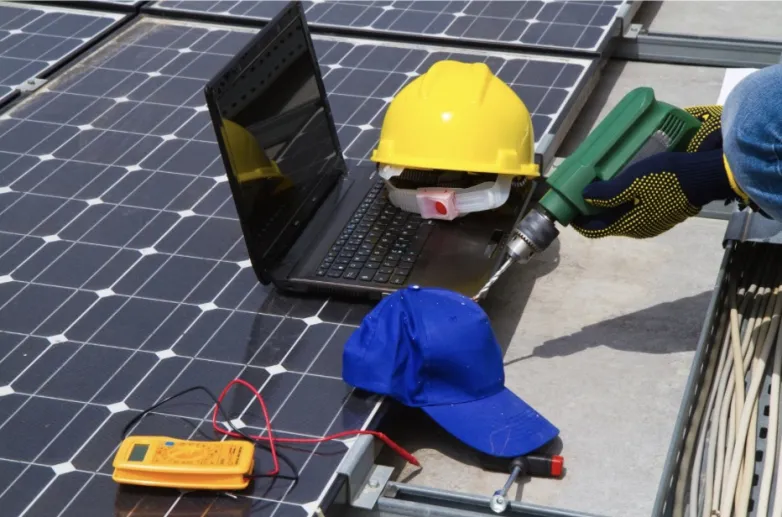5 Hidden Issues That Keep Your Power Bills High With Solar

You probably remember the day your solar panels were switched on, that satisfaction of finally cutting ties (well, partially) with your power company. But months later, that excitement fades when you see a high electric bill even with solar panels. What happened to those promised savings?
You’re definitely not the only one asking these questions. Many solar owners face the same issue. Some homeowners are guessing it could be the lack of the hardware that helps regulate export limits. Others have CTs that aren’t installed correctly, add to that a battery that never discharges.
Wire In Electrical’s experts reveal the top solar panel issues behind those still rising costs so you can finally stop guessing. Read on so you can address them fast and get your savings back on track.
1) You’re Using More Power (than your system was designed to cover)
Solar lowered your grid usage, but your total usage crept up. New routines (WFH, school holidays), added loads (ducted air, pool pump, heat pump HW, EV charging), or winter heating can quietly eat the savings your panels generate.
Quick checks (homeowner):
-
Run through the last 3–6 months: what appliance or routine changed?
-
Compare daytime vs night consumption (smart meter/app).
-
Move flexible loads (washing, dishwasher, pool) to 10am–3pm.
2) Reduced Solar Feed-In Tariff (FIT)
Many solar homeowners are scratching their heads, wondering why their credits have dropped even though their panels are performing perfectly. The truth is, feed-in tariffs across Australia have steadily declined as more homes join the solar movement.
Retailers have trimmed FITs and many plans pay less for exports than you pay to import. If you still export a lot while buying evenings at a higher rate, bills can rise even with good generation.
Quick checks (homeowner)
-
If your FIT (what you earn) is much lower than your import rate (what you pay), exporting too much solar and buying a lot back at night can cancel out your savings.
-
Increase self-consumption: shift loads to solar hours; consider hot-water diverter or controlled-load.
-
If you have a battery, review time-based control to discharge at peak.
3) Solar Inverter Errors (faults, misconfiguration, or site issues)
The inverter is the brain. If it’s tripping, throttling, or misreading flows, your generation drops or your exports/imports misbehave. Common culprits may include grid over-voltage, earth/insulation faults (Riso), DC isolation errors, CTs wired backwards, export limit settings, firmware bugs, clipping due to undersized inverter, or battery not discharging.
When to call a pro (don’t DIY these):
-
Recurrent over-voltage (may need DNSP tap change or export cap tuning).
-
Insulation/earth faults, water ingress, cracked isolators.
-
CT rewiring or meter board work.
-
Firmware/parameter changes requiring accredited access.
4) General Electricity Price Rises
Even if usage is steady, import rates, demand charges, daily supply charges, and TOU windows can change. Some areas now add demand tariffs that penalize short evening peaks.
Many Australian electricity retailers (like AGL, Origin, EnergyAustralia, Red Energy, etc.) have increased daily supply charges by around 20–40 cents/day since 2022. The takeaway: even if your solar performs perfectly, pricing structure changes alone can lift your quarterly bill by $50–$100.
5) Your Solar System Might Be Undersized
If your solar system feels like it’s “doing its job” but your bills keep rising, it might simply be too small for the way you live now. Most systems are sized based on the energy habits you had prior installation, not the ones you have today. As your household grows or you add new high-demand appliances, your panels may no longer generate enough to match your typical daytime and shiftable loads.
If most of your usage happens after sunset, cooking, heating, Netflix, EV charging, your solar can’t directly cover those loads unless you have a battery. Even if your generation looks solid on paper, you’re still paying for that after-dark energy.
Get Your Solar Savings Back on Track with Wire in Electrical
Solar should save you money and not stress you out. If something doesn’t look right, we’ll check your system, explain what’s going on, and help you get back on track. Our electricians will inspect, service, or upgrade your system so you can finally cut those bills back down.
Plenty of local homeowners in Sydney have faced the same solar frustrations, and we’ve helped them turn things around. Wire In Electrical can do the same for you with professional maintenance and honest advice.
Explore more resources on solar power systems, cost-saving strategies, and sustainable living at List.Solar,
Also read
- Maximizing Efficiency with Low-Maintenance Solar Panel Systems
- Cyber Hygiene for Solar Companies: Protecting Your Data from Email Threats
- Invitation to Solar PV & Energy Storage World Expo 2026
- Exciting Announcement: ASEAN Smart Energy & Energy Storage Expo 2026
- Off-Grid Batteries: Powering Independent Energy Systems

